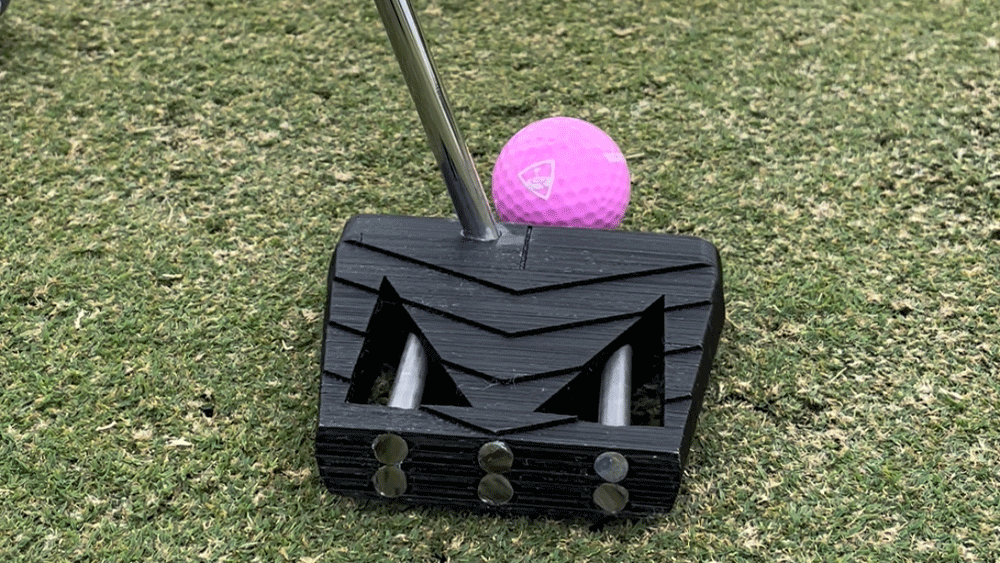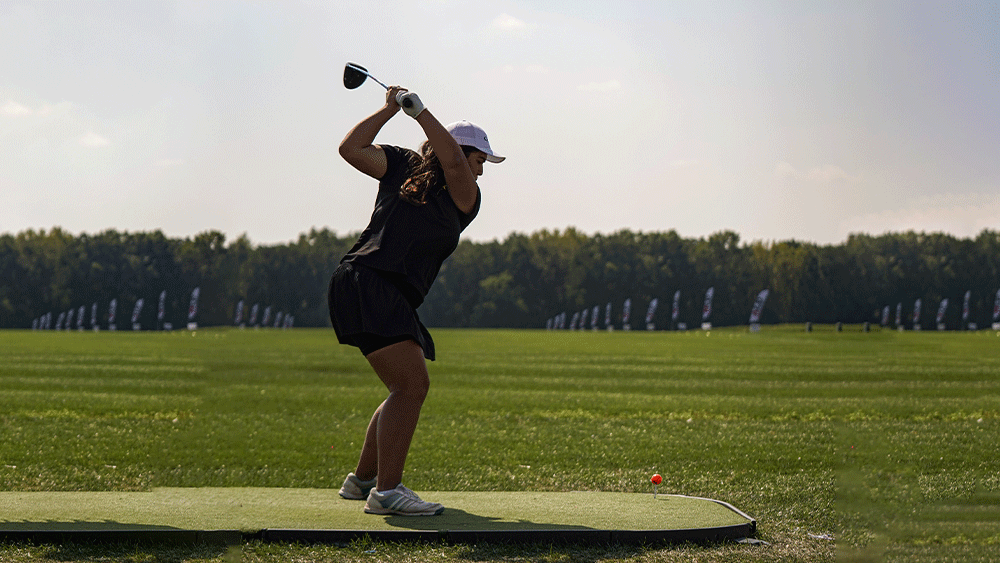How is golf equipment made, what is it made of and why does it matter?
You can head to engineering student Katie Calderon's viral TikTok page to find answers to these questions. Whether you watch her unveil the insides of golf balls, compete in long-drive tournaments or follow her journey to develop a 3D-printed putter, Calderon's page continually showcases the overlap between golf and engineering.
When I think about engineering concepts and principles, I relate them to golf. Engineering has helped make me a better golfer, and golfing has made me a better engineer.
Now a junior in the Department of Materials Science and Engineering at Texas A&M University and a national champion long-drive competitor, Calderon started golfing at age four when she received a free lesson offered at a hotel. Since that moment, golf has remained a constant in her life.
At age 16, she began working at a golf course, where she fell in love with golf club repairs and fittings. Although she always imagined playing golf in college, she was also interested in working in the research and development of golf clubs. She then reached out to the Callaway Golf Company for direction.
"I asked someone I followed on Instagram who worked at Callaway if they could put me in contact with the team who builds golf clubs," Calderon said. "When I was able to speak with a person on the development team, they immediately told me engineering was the way to go."

At the same time that she decided to pursue engineering, she began her TikTok page. After gaining hundreds of followers from a video of her attempting to make a table out of golf balls, she discovered she could use the platform to showcase how golf clubs are engineered. Making use of the 3D printers at Texas A&M, Calderon began developing and testing a 3D-printed putter — the first ever to be produced.
"I wanted to start exploring more within golf engineering, and my professors encouraged me that I needed to try designs out myself," she said. "I created my first 3D-printed putter, and it blew up on TikTok. I started posting more videos of my design process. Engineers in the industry began commenting, giving me bits of information to improve my putters. Professional golfers have asked to try it out. This help and encouragement from experts inspired me to keep working."
Through her practical 3D printing experience and her previous jobs in golf, she understood how golf clubs were made from a mechanical aspect. But what were her golf clubs made of, and how does the club’s material makeup affect its abilities? These questions inspired her to pursue materials science and engineering.
"With a degree in this field, I actually have a cooler angle on how to produce golf clubs," she said. "I can learn the material aspects of wedges or putters and understand how different metals come into play when creating a club."
The summer of her freshman year, Calderon began an internship with CTRL, an Aggie-founded engineering company that uses sensors to help improve golfers’ swings. Calderon said she gained many valuable tools from the internship that have helped her in school, on the green and in gaining a social media following.

When she's not making putters from scratch or cutting video clips, she's using a driver to crush balls down the fairway. As a professional long-drive competitor, Calderon is among the country's top five best women in the sport. Her success is partially due to her ability to understand the makeup of a golf club and how this can affect her power, speed and distance.
Her knowledge was showcased when she partnered with a company to create her driver for the national long-drive competition. As she conveyed her interest in golf club design, the company asked Calderon if she'd like to participate in the development process. When she received the first model of the club and put it to use, she noticed a problem with her spin. She hypothesized it was likely caused by a steel weight on the club's top.
"They had used 303 steel in the weight, the same steel used in putters," she said. "I knew from repairs, fittings and materials classes that tungsten would be a better option. It's lighter, so the head will move faster, and the tungsten will provide a better balance factor. When I would hit the ball, it would, theoretically, come off faster. When I put the tungsten in, it fixed all the issues I had with spin."
After two years of making putters, posting TikTok videos and keeping up with her studies, Calderon landed a summer internship at Callaway. She is currently in San Diego, California, at the Callaway headquarters, where she tests and reviews putters for the design team.
Once she is back on the College Station campus, she plans to advance her 3D printing putter technology using what she has learned throughout her internship. After graduation, she hopes to continue her career in golf club development while growing her TikTok page, which has over 175,000 followers and over 10.1 million likes.
"Throughout my time at Texas A&M, I have never been afraid to take a chance and ask questions," she said. "I realized that what I wanted to do was something I could achieve if I just kept trying. I've played golf competitively my whole life, so it's amazing to be a part of the sport in a different way."